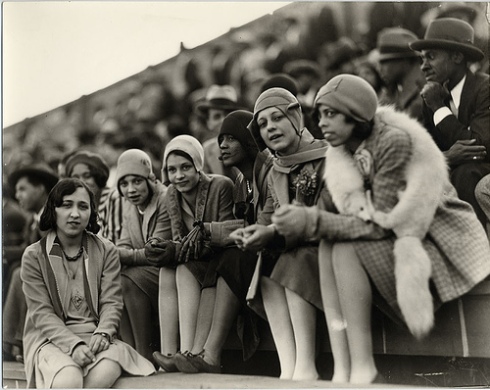
The word ‘passing’ has distinct moral connotations. For Irene, Clare’s act of passing serves as evidence of the other woman’s selfishness and disregard for other people. Looking back on the period that Larsen’s work is set in, it would be easy to make a similar judgment. I would suggest, however, that such a judgment should not be made without sufficient context. Without historical context – without making the effort to understand the need to ‘pass’ in American society – Clare’s actions could be construed as egotistic and potential harmful to African American society as a whole. It is only when we uncover the characters’ histories that we understand that for all their common childhood friends, these two women had entirely different experiences growing up.
Irene is able to enjoy the benefits of African American association without any of the potential drawbacks. Unlike her husband, who is very dark-skinned, Irene is able to enjoy society outside of the realm of the African American community. She was also fortunate enough to have been born into wealth. As one of our group members’ remarked at our last meeting, privilege is invisible to those who possess it. Clare, for all that she is beautiful and light-skinned, never had the same type of privilege. Clare’s father was a drunk, and she herself was the subject of many unpleasant rumours. Far from being supported by her community, she was easily discarded and forgotten. By ‘passing’ as white, Clare is able to live a comfortable life.
For Irene and those looking back on the 1920s, the notion of ‘passing’ can seem like a betrayal of community and a disregard for African American culture. The picture becomes much more complicated when we take into account the individual histories those who ‘passed’, and the conditions in society that made it desirable to do so. In order to understand the importance and the implications of passing, we must acknowledge that our understanding of ‘passing’ is dependent on our own knowledge and interpretations of race today. Rather than relying on these interpretations, and taking at face value the meaning of passing, we need to dig deeper into social history. The moral implications of passing have an undeniable impact on the way we read this text, however they do not operate outside of social life. Uncovering peoples’ stories and revealing the context in which people categorized themselves might complicate the issues, but doing so also makes it more difficult for us to become entrenched in specific ideological positions.
Claire
Picture from Google Images



